

EXPLORE BY TOPIC:
  Our top 10 resources
Our top 10 resources
  Childhood / Early Life
Childhood / Early Life
  Chronic Stress
Chronic Stress
  Education
Education
  Food Security
Food Security
  Genetics
Genetics
  Jobs & Work
Jobs & Work
  Housing / Neighborhoods
Housing / Neighborhoods
  Income & Wealth
Income & Wealth
  Race / Racism
Race / Racism
  Social Inclusion
Social Inclusion
  Policy & Change
Policy & Change





Buy the DVD
e-Newsletter
FAQs
Contact Us
Site Map
Home

|
 |


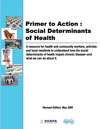 Primer to Action: Social Determinants of Health Primer to Action: Social Determinants of Health 
REPORT by the Ontario Prevention Clearinghouse, 2007 This resource is for health professionals, lay workers, volunteers and activists. It’s for you and your organization, but also for your family, and your community. We will focus on six key determinants of health: income, education, employment, housing, food, and inclusion. The Primer to Action will show you:
1) where you can find more information about each of six determinants;
2) how you can work on the determinants in your agency;
3) who you can learn from, with examples and models; and
4) what you can do in your community. |
 |
 Promoting Health Equity: A Resource to Help Communities Address Social Determinants of Health (pdf) Promoting Health Equity: A Resource to Help Communities Address Social Determinants of Health (pdf) 
WORKBOOK - Centers for Disease Control and Prevention, 2008 This workbook is for community-based organizations seeking to affect the social determinants of health through community-based participatory approaches and nontraditional partnerships. Along with an introduction to the concepts of health equity, the workbook presents case studies of communities working at both small and large scales. The authors then provide guidelines for developing your own initiative, from creating partnerships to identifying your approach to assessing and maintaining your progress. |
 |
 Proximal, Distal, and the Politics of Causation: What's Level Got to Do with It? Proximal, Distal, and the Politics of Causation: What's Level Got to Do with It? 
SCHOLARLY ARTICLE by Dr. Nancy Krieger, American Journal of Public Health, Feb 2008 Causal thinking in public health, and especially in the growing literature on social determinants of health, routinely employs the terminology of proximal (or downstream) and distal (or upstream). In this piece, Krieger argues that the use of these terms is problematic and adversely affects public health research, practice, and causal accountability. At issue are distortions created by conflating measures of space, time, level, and causal strength.
The article draws on an ecosocial perspective to show how public health got caught in the middle of the problematic proximal–distal divide and proposes replacing the terms with explicit language about levels, pathways, and power.
|
 |
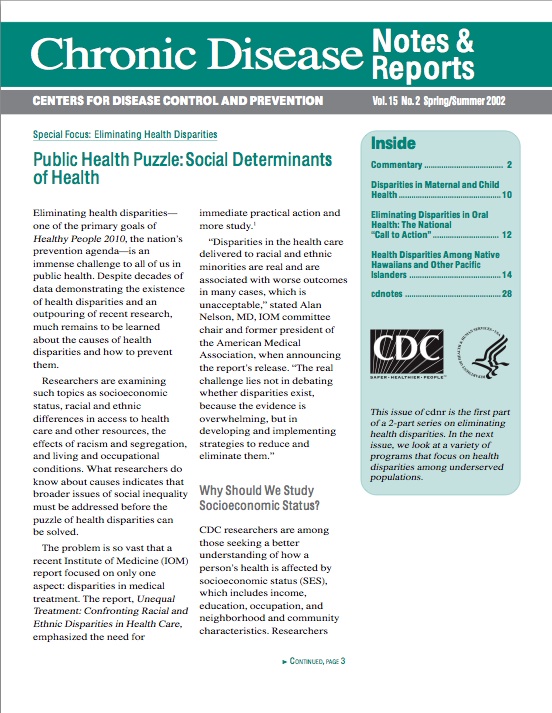 Public Health Puzzle: Social Determinants of Health (pdf) Public Health Puzzle: Social Determinants of Health (pdf) 
NEWSLETTER, Chronic Disease Notes & Reports, Centers for Disease Control and Prevention This issue of cdnr is the first part of a 2-part series on eliminating health disparities. It includes articles on disparities in maternal and child health, eliminating disparities in oral health, and health disparities among Native Hawaiians and other Pacific Islanders. |
 |
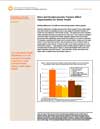 Race and Socioeconomic Factors Affect Opportunities for Better Health (pdf) Race and Socioeconomic Factors Affect Opportunities for Better Health (pdf) 
REPORT by the RWJF Commission to Build a Healthier America, April 2009 This issue brief provides evidence and explanations for striking differences health status by both race and socioeconomic status. |
 |
 Race in the Epidemiologic Literature: An Examination of the American Journal of Epidemiology, 1921-1990 Race in the Epidemiologic Literature: An Examination of the American Journal of Epidemiology, 1921-1990 
SCHOLARLY ARTICLE by Jones, LaVeist, and Lillie-Blanton, American Journal of Epidemiology, 1991 This study examines the past and current uses of "race" in US epidemiologic research. It finds that the proportion of U.S. original research papers containing a reference to "race" rose steadily from 1975. However, rather than increasing inclusion of "nonwhite" groups in studies, consideration of "race" seems to have simply increased explicit exclusion of "nonwhites." Abstract only. |
 |
 Race, Racial Inequality, and Health Inequities: Separating Myth from Fact (pdf) Race, Racial Inequality, and Health Inequities: Separating Myth from Fact (pdf) 
ARTICLE by Brian Smedley, Michael Jeffries, Larry Adelman and Jean Cheng This paper, prepared by staff at The Opportunity Agenda and California Newsreel, provides background, statistics, and theoretical frameworks to help the reader better understand the role that "race" plays in health inequities. Evidence is presented that discounts popularly accepted genetic explanations and supports theories of socially-based factors. |
 |
 Race, Racism and the Practice of Epidemiology Race, Racism and the Practice of Epidemiology 
SCHOLARLY ARTICLE by Camara Phyllis Jones, American Journal of Epidemiology, 2001 This commentary explores the meanings of race, particularly with regard to the practice of epidemiology. The author asserts that race is a contextual variable, not a
characteristic of an individual person. Examining the five uses of race discussed by Kaufman and Cooper elsewhere in the same publication, she raises a larger issue about which questions get asked when race-associated differences in health outcomes are under scrutiny. The author concludes by asking readers to consider underlying causes and suggests eight recommendations for practice. |
 |
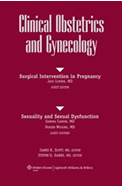 Race, racism, and racial disparities in adverse birth outcomes Race, racism, and racial disparities in adverse birth outcomes 
Clinical Obstetrics and Gynecology The chronic stress of racism and the social inequality it engenders may be underlying social determinants of persistent racial disparities in health, including infant mortality, preterm delivery, and low birth weight. This article describes the problem of racial disparities in adverse birth outcomes; outlines the multidimensional nature of racism and the pathways by which it may adversely affect health; and discusses the implications for clinical practice.
|
 |
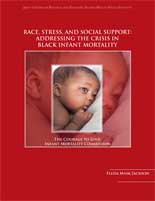 Race, Stress, and Social Support: Addressing the Crisis in Black Infant Mortality Race, Stress, and Social Support: Addressing the Crisis in Black Infant Mortality 
REPORT by Fleda Mask Jackson, from the Health Policy Institute, 2007 This background paper examines the impact of stress and stress mediators on pregnancy outcomes for African American women. The report also examines social support and other relational experiences, and makes recommedations for related changes in public policy and maternal and child health practices. |
 |
 Racial and Ethnic Disparities in Birth Outcomes: A Life-Course Perspective Racial and Ethnic Disparities in Birth Outcomes: A Life-Course Perspective 
SCHOLARLY ARTICLE by Michael Lu, MD, Journal of Maternal Child Health, 2003 Learn more about Dr. Michael Lu’s “life-course perspective”
(Abstract only) |
 |
 Racial and Ethnic Disparities in Women's Health Status (pdf) Racial and Ethnic Disparities in Women's Health Status (pdf) 
PRESENTATION TRANSCRIPT, Carol J. Rowland Hogue, PhD, MPH, Maternal and Child Health Leadership Conference, April 2003 Hogue eloquently describes the prevalence and effects of racism and poverty on a wide variety of health issues, and makes a case for better social supports. This links to a pdf of the transcript. The talk is also available on the conference website in HTML, along with an audio recording, and Hogue's slides. |
 |
 Racial Categories in Medical Practice: How Useful Are They? Racial Categories in Medical Practice: How Useful Are They? 
ARTICLE by Lundy Braun, Anne Fausto-Sterling, Duana Fullwiley, Evelynn M Hammonds, Alondra Nelson, William Quivers, Susan M Reverby, and Alexandra E Shields, PLoS Med. 2007 September; 4(9): e271. Is it good medical practice for physicians to consider race when making a diagnosis or conducting research? How should they do this? The existence of health disparities suggests the need for race-based data, yet "racial profiling" in medicine - assuming there's an underlying biological basis for race - can lead to incorrect, even fatal judgments. This article discusses the complex history of socially constructed U.S. racial categories and offers suggestions for how to improve outcomes and avoid pitfalls. |
 |
 Racial differences in birth outcomes: the role of general, pregnancy, and racism stress Racial differences in birth outcomes: the role of general, pregnancy, and racism stress 
Health Psychology This study examined the role of psychosocial stress in racial differences in birth outcomes. Perceived racism and indicators of general stress were correlated with birth weight and tested in regression analyses. In the sample as a whole, lifetime and childhood indicators of perceived racism predicted birth weight and attenuated racial differences, independent of medical and sociodemographic control variables. Models within each race group showed that perceived racism was a significant predictor of birth weight in African Americans, but not in non-Hispanic Whites.
These findings are among the first to indicate the significance of psychosocial factors that occur early in the life course for these specific health outcomes.
|
 |
 Racial Residential Segregation: A Fundamental Cause of Racial Disparities in Health (pdf) Racial Residential Segregation: A Fundamental Cause of Racial Disparities in Health (pdf) 
SCHOLARLY ARTICLE by David R. Williams and Chiquita Collins, Public Health Reports, 2001 The authors review evidence that suggests that segregation is a primary cause of racial differences in socioeconomic status (SES) by determining access to education and employment opportunities. SES in turn remains a fundamental cause of racial differences in health. Segregation also creates conditions inimical to health in the social and physical environment. The authors conclude that effective efforts to eliminate racial disparities in health must seriously confront segregation and its pervasive consequences |
 |
 Racial/Ethnic Discrimination and Health: Findings from Community Studies Racial/Ethnic Discrimination and Health: Findings from Community Studies 
SCHOLARLY ARTICLE by David Williams et al., American Journal of Public Health, 2003 This review of available empirical evidence from population-based studies of the association between perceptions of racial/ethnic discrimination and health indicates that discrimination is associated with multiple indicators of poorer physical and, especially, mental health status. However, current research does not adequately address whether and how exposure to discrimination leads to increased risk of disease. Research on stress points to important directions for future research on mechanisms by which discrimination can lead to changes in health. |
 |
 Racialized Medical Genomics: Shiny, Bright and Wrong Racialized Medical Genomics: Shiny, Bright and Wrong 
ARTICLE by Robert Wallace, Department of Biology at the City College of New York Several writers have recently claimed that new genomics findings demonstrate that race is biologically real after all, perhaps most notably Armand Marie Leroi's New York Times op-ed of March 14, 2005. This excellent article by Robert Wallace disputes that assertion. |
 |
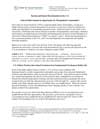 Racism and Racial Discrimination in the U.S. (PDF) Racism and Racial Discrimination in the U.S. (PDF) 
REPORT from the Center for Social Inclusion, June 2008 To support the U.S. 2008 visit of the UN Special Rapporteur on Contemporary Forms of Racism, Racial Discrimination, Xenophobia and Related Intolerance, CSI provided an analysis of the ways in which U.S. policies perpetuate racialized poverty and fail to meet our international obligations to end racial discrimination. CSI examined public policy in light of our treaty obligations under the International Convention on the Elimination of All Forms of Racial Discrimination (CERD), which commits the United States to take concrete steps to combat racism, and to submit regular progress reports on its efforts.
Highlighting the connections between human rights and the structural racism approach, the report tries to illuminate how "federal policy impacting housing, education and transportation have the effect of exacerbating concentrated poverty in communities of color, and ensuring that racial discrimination is perpetuated, rather than eliminated." |
 |
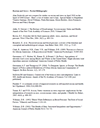 Racism and Stress: A Partial Bibliography Racism and Stress: A Partial Bibliography 
Alan Zaslavsky put out a request for studies on racism and stress in April 2010 on the Spirit of 1848 listserv. This bibliography is a list of the studies suggested to him.
|
 |
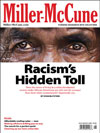 Racism's Hidden Toll Racism's Hidden Toll 
MAGAZINE ARTICLE, Miller McCune, June 2009 In profiling researcher Arline Geronimus and the development of her weathering hypothesis, this article lays out evidence for the relevance of racism and other social factors for understanding population health, particularly in the example of teen pregnancies in low-income Black communities. Could serve as an introduction to the topic for those new to health equity ideas. |
 |
 Reaching for a Healthier Life: Facts on Socioeconomic Status and Health in the U.S. (pdf) Reaching for a Healthier Life: Facts on Socioeconomic Status and Health in the U.S. (pdf) 
REPORT from The John D. and Catherine T. MacArthur Foundation Research Network on Socioeconomic Status and Health, 2007 An overview of how socioeconomic status affects health, though consideration of neighborhood, employment conditions, personal behaviors, health care, race and stress. Includes policy implications. The MacArthur Network on SES and Health brings together many of the world's top researchers on socioeconomic factors in health. Many of these experts were interviewed for UNNATURAL CAUSES. |
 |
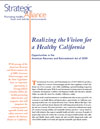 Realizing the Vision for a Healthy California (pdf) Realizing the Vision for a Healthy California (pdf) 
POLICY BRIEF from Strategic Alliance, 2009
The Strategic Alliance for Healthy Food and Activity Environments has developed recommendations for taking advantage of opportunities from the American Recovery and Reinvestment Act of 2009 to improve the health and safety of all Californians.
|
 |
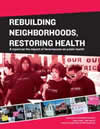 Rebuilding Neighborhoods, Restoring Health Rebuilding Neighborhoods, Restoring Health 
Alameda County Public Health Department and Causa Justa ::Just Cause This report examines the many pathways by which foreclosures are taking a toll on individual and community health. The consequences of the foreclosure crisis spreading most rapidly in low-income communities of color extend well beyond individual families being forced to leave their homes. Neighborhoods pockmarked by vacant housing are struggling with increased crime and violence. Social bonds are broken as families leave the neighborhood, leaving the entire community less prepared to deal with problems. School stability is threatened as families are forced to move out. The report highlights the health impacts of foreclosure and offers strategies to reduce or eliminate foreclosure's negative health outcomes. |
 |
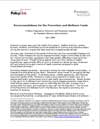 Recommendations for the Prevention and Wellness Funds (pdf) Recommendations for the Prevention and Wellness Funds (pdf) 
POLICY MEMO from PolicyLink and Prevention Institute, April 2009 This memo offers recommendations for targeting Prevention and Wellness recovery funds to maximize the health and equity benefits in the Recovery Act of spring 2009. It makes the case that prioritizing disease prevention – particularly among the most impacted communities – is imperative to strengthening the nation. It makes specific recommendations for using funds to
- Build upon and leverage existing prevention initiatives;
- Promote equity by targeting America’s low-income communities and communities of color;
- Target multi-disciplinary strategies focused on environmental change;
- Develop the health workforce to effectively shape and implement prevention efforts; and
- Advance a vision of healthy people, healthy places. |
 |
 Reducing Health Disparities For Latino Immigrants By Strengthening Communities (pdf) Reducing Health Disparities For Latino Immigrants By Strengthening Communities (pdf) 
REPORT from PolicyLink and the Joint Center for Political and Economic Studies, Washington, DC, May 2004 This brief examines the ways in which the social, economic, and physical environments of Latino immigrant communities affect health and contribute to health disparities. The first part discusses the health of Latino immigrants in general and how health status is influenced by community factors related to immigrant status. The next part describes key immigration trends and explores some of the defining characteristics of this population, including issues unique to immigrant communities, such as language, legal status, settlement patterns, and community development issues. The third part discusses the importance of community approaches to immigrant health and describes several successful community efforts that build on the assets of Latino immigrant communities in order to improve health. Finally, we offer a number of policy recommendations designed to improve health and reduce disparities for Latino immigrants by strengthening the communities in which they live. |
 |
| « Prev 1 | 2 | 3 | 4 | 5 | 6 | 7 | 8 | 9 | 10 | 11 | 12 Next » |
|




